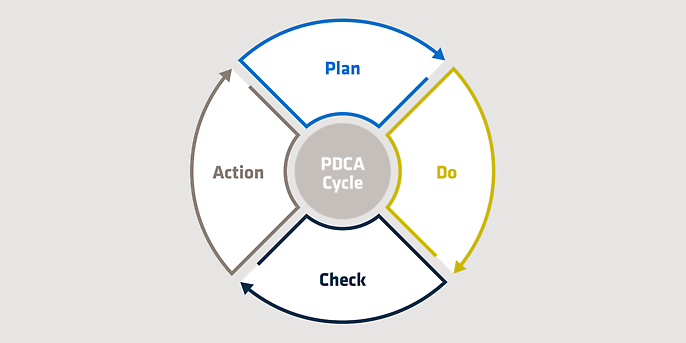23. February 2023 By Stefan Mönk and Cordula Schuchardt
#10 Agile software development – using agile working methods to navigate the VUCA world
In a rapidly changing environment, where needs, markets and technologies are changing at an ever-increasing pace, it is important not to lose focus and to adapt to the speed of these changes. We want to accept the unexpected, proactively demand it and work with it. It is our job to navigate through this jungle, and this jungle has a name: VUCA.
VUCA simply describes our environment, the system in which we live. VUCA does not provide answers to questions and is neither a method nor a framework.
VUCA
Volatility, uncertainty, complexity, ambiguity – the acronym VUCA describes a kind of jungle – the unknown, the uncertainty, the new environment, the changing conditions and the increasing complexity of challenges that comes with them. VUCA is not anything new, but it does give a name to something very important: the environment is complex and – whether we like it or not – it changes on its own terms.
Volatility
Volatility describes the speed, scope and the dynamics to which you need to react in order not to lose touch. Markets, technologies, requirements and outlooks change faster than expected in software development in particular and it is vital that we react accordingly.
Uncertainty
Uncertainty in this kind of jungle expresses that requirements and events are becoming less and less predictable due to the volatility described above. We have already learned about this in detail in previous blog posts. In agile working in particular, you accept the unforeseen and deal proactively with change.
Complexity
While the market may be becoming more and more confusing and the number of demands we have to react to may be growing, so is the variety of ways we have at our disposal to handle these situations.
In the Agile Manifesto, responding to change is valued more highly than following a plan. But you should find out how to react as a collective within the framework of empirical process control.
Ambiguity
Ambiguity describes the quality of being open to more than one interpretation; inexactness. The large amount of information that can be obtained pertaining to certain events or situations means the risk of misinterpreting this information increases. This makes it difficult to maintain focus and to correctly categorise your own situation in the grand scheme of things.
How do our customers behave? How do we deal with all this information together with them? Proximity to our customers is important to us.
How do we deal with VUCA?
There are a number of ways to deal with VUCA. Agile methods can help with this. The first step should be to facilitate an environment in which everyone involved can talk openly as equals and in which transparency is created about all the information, goals and activities.
Fixed feedback cycles can also be helpful. The length of the feedback cycles depends on the team and should be determined together. Having a feedback cycle every two to four weeks is definitely a good place to start.
Furthermore, it is important to stay focused. If everyone involved knows what they are aiming to achieve, they can align their day-to-day work accordingly. If our work does not contribute to our goals, we should at least question why this is the case.
The PDCA cycle
In a VUCA world, everyone wants to be able to react quickly to changes, minimise their own mistakes, avoid dependencies and continuously improve. The PDCA cycle helps us to do this.
PDCA stands for Plan – Do – Check – Act. We have briefly touched on this method in a previous blog post, but we would now like to go into it in more depth. PDCA is a four-step method for implementing change that focuses on continuous improvement.
Plan
To be able to plan at all, you have to be clear about the goal – the focus. What problems do you need to solve, what do you need to do to solve them, what do you need to know and how do you measure whether you are on the right track?
Do
The next step is to now put the plan into action. Always remember to take small steps, as this reduces the risk of things developing in a way you do not want them to.
Check
Planning and implementation are not best practices, but a logical consequence – and this is where it gets interesting. Check is probably the most important phase of the PDCA cycle and should be allocated sufficient time. This is where you look at what you are doing and check whether something needs to be changed and what this change might look like.
Act
Now you want to apply what you have found and implement the whole thing again based on this. You have learned something and will now use this cycle iteratively.

Incidentally, the PDCA cycle is also a core practice of Kanban, is used in SAFe and is also found in Scrum. It thrives on regularity, which means you have to stay on the ball. Being agile does not mean being faster or better. But agility – and agile methods in particular – help you to gradually find your way in an unknown world shaped by risks and rapid change.
And how does your team or organisation deal with the challenges of the VUCA world?
You can find more exciting topics from the adesso world in our blog articles published so far.
Also interesting:


